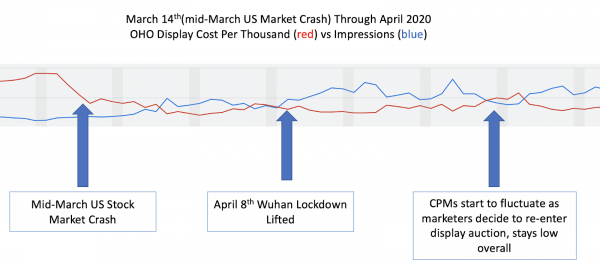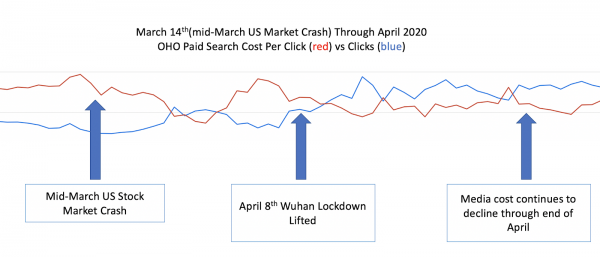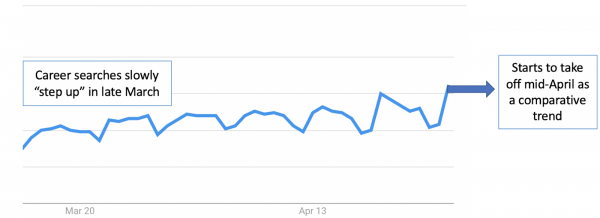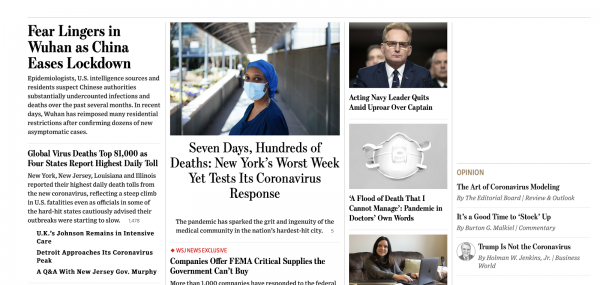COVID-19’s Impact on Digital Marketing in Higher Education: Part 2
About a month ago, we posted some predictions around paid media and site traffic based on what we were seeing in our campaign and industry-wide data from March 14 to March 25, 2020. After further analysis of data from March 14 to April 30, 2020, most of our predictions and the trends we identified have come to fruition over the past five weeks.
While we don’t know what the future holds for schools, enrollments, and the impact of the pandemic we are continuing to see opportunities for schools to make effective adjustments in their campaigns to reach and engage prospects.
Paid Media Cost Goes Down Across Verticals
Higher ed marketers that stayed in the market realized benefits
Over the past three weeks, campaigns saw our anticipated drop in digital media cost – in some cases up to 50%. Remarkably, these campaigns saw no drop off in conversions. In other words, because schools kept advertising, we were able to push more ads in front of people at half the media cost. While conversion rates went down for some schools, our client schools ended up with increased or stable inquiries on the whole for the month of April (adjusting for seasonality and comparing year-over-year, this also still holds true). As anticipated, we saw strength in colleges with online program offerings.

Looking forward, we anticipate media costs will trend down in the near term before bottoming out (we’re already seeing this displayed in the above chart and seeing paid search continue to decline below), but we do expect costs to increase to at least the regular average with political advertising later in 2020.

Organic Search Traffic Sees a Small Dip, Returns to Normal
From March 14th-25th (the period we analyzed in March) we saw overall website traffic rise as high as 68% for clients. Since then, we have seen organic traffic dip as much as 30%. That decline can be partially buoyed by paid media investment to keep site traffic stable.
Some clients — particularly brick and mortar schools — are seeing more of a rollercoaster of organic traffic coming in, with big dips and big highs, flowing in and out (weekends typically, but not consistently, being the low):

Search Terms Around “Careers” Will Continue to Balloon
Career searches steadily increased in late-March after a small dip, taking off towards mid-April (around April 8th). April traffic overall stayed steady for career searches, and looks to be taking off in May if trends continue.

Source: Google Trends “Career” Searches, March to mid-April 2020
Google Search results for higher education related terms, such as college or master’s degrees, saw a small, immediate dip as an impact of coronavirus in the March 14-25th. Based on an index out of 100, interest in “master’s degree” related keywords dipped over 20 points. In the last week in March, this trend continued downward slightly but then stabilized toward April to a consistent lower organic search level.
This is likely because people are more immediately looking for a job after furloughs or layoffs and are looking for work. If long-term prospects do not return to normal, likely they will start looking for educational opportunities.

Source: Google Trends “College” Searches, February to Mid-April, 2020
One client in particular that has both online and brick and mortar offerings is seeing for the first time their online offerings in the top 10 of their website landing pages, especially for short-term certificate programs, likely driven by people wanting to upskill while they hope for the economy to return to normal.
A Turning Point for Search Behavior : April 8th
On April 8th, many people throughout the country felt hope that things would return to normal as Wuhan exited lockdown. They woke up to news on that day like this one from the Wall Street Journal:

According to one survey from mid-April, nearly a quarter of all consumers thought life would return to normal by May 1st. It’s past May 1st now, the COVID-19 pandemic is ongoing, with lockdowns continuing in multiple US states through at least mid-May.
By all means, COVID-19 has created an uncertain new normal, and we all wish that life would return to some semblance of what it was before. In this fluid situation, we will continue to monitor the changing dynamics of digital marketing and look for unique opportunities to help schools achieve their brand, enrollment, and marketing goals.